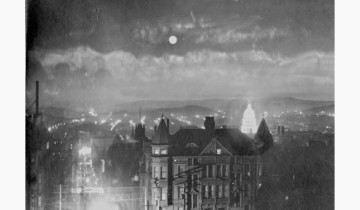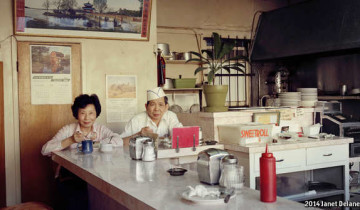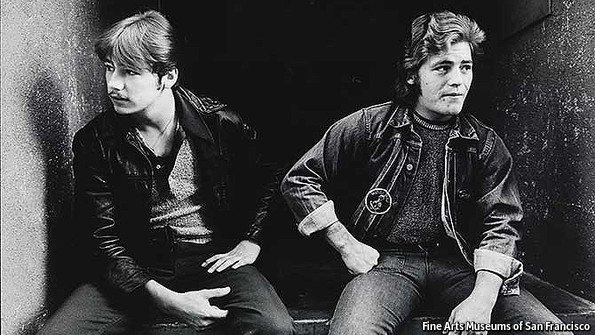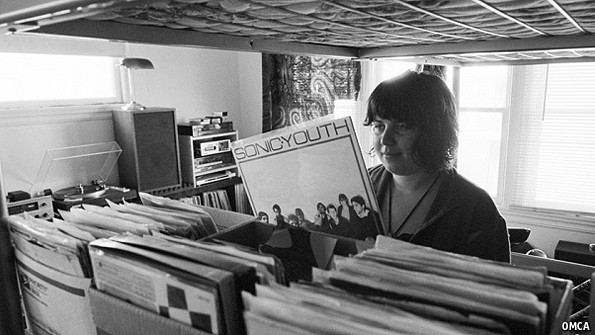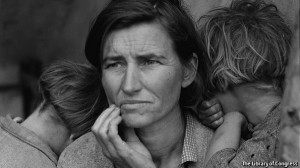 For the ECONOMIST: In 1936 Dorothea Lange was working on a photographic assignment for the Farm Security Administration to document the harsh rural conditions affecting America’s farm workers. On her way home from a long day of shooting, Lange drove past a pea-pickers’ camp outside Los Angeles. She was anxious to get home, but stopped anyway and spoke briefly with a woman in the camp. She took six photos. One them, which she would call “Migrant Mother, 1936” (pictured), showed the worried-looking woman sitting in a lean-to tent, infant in her lap, children on either side, all of them starving in the middle of a crop freeze. The image, printed in newspapers across the country, helped bring national attention to the issues facing displaced farm workers. It also made Lange’s name.
For the ECONOMIST: In 1936 Dorothea Lange was working on a photographic assignment for the Farm Security Administration to document the harsh rural conditions affecting America’s farm workers. On her way home from a long day of shooting, Lange drove past a pea-pickers’ camp outside Los Angeles. She was anxious to get home, but stopped anyway and spoke briefly with a woman in the camp. She took six photos. One them, which she would call “Migrant Mother, 1936” (pictured), showed the worried-looking woman sitting in a lean-to tent, infant in her lap, children on either side, all of them starving in the middle of a crop freeze. The image, printed in newspapers across the country, helped bring national attention to the issues facing displaced farm workers. It also made Lange’s name.
Originally a portrait photographer, she had ventured into street photography as the Depression began to unfold. “White Angel Breadline, San Francisco”, a picture she took in 1933 of people waiting at a soup kitchen not far from her studio, would set her off on a new course of what she would call “trying to get lost”. She would go on to photograph sharecroppers in the American south, California’s Japanese internment camps during the second world war, the building of the Monticello Dam and a wide array of landscapes and interiors, and would help establish the first department of fine-art photography at the California School of Fine Arts.
This week, PBS is showing a new American Masters documentary, “Dorothea Lange: Grab a Hunk of Lightning“, directed by Lange’s grand-daughter, Dyanna Taylor. It includes interviews with Lange from the 1960s, photos that have not been seen before, and new interviews with family, friends and colleagues. Footage from the 1960s shows Lange preparing a retrospective of her work at the Museum of Modern Art in New York, and fretting about the exhibition. At other times she is witty and sarcastic, laughing while cooking with friends and family. And she is quietly thoughtful and philosophical about her life and work. “This is the world,” she says during one interview. “This is the way it looks. Look at it.”
The film also offers some revealing details about Lange’s personal relationships. At times she places her children in foster care so she can pursue photography projects—and her son later pawns her camera. Her first husband, Maynard Dixon, a painter, is depicted as a loving father and talented artist who left much of the family responsibilities to Lange. Her second husband, Paul Taylor, an economics professor, is shown to be an idealist whose research into farm and labour conditions across America afforded Lange an endless supply of subjects to photograph.
The Oakland Museum of California, which houses a permanent collection of Lange’s work, hosted a preview screening of the film earlier this week. During the Q&A audience members shared their Lange anecdotes: she was spiritual, not religious; her intensity could be difficult to deal with; she was remarkably good at earning people’s trust. Ms Taylor was also there to provide a more immediate appraisal of her grandmother’s talent. “I could change out nearly every photo you see in the film for another one,” she said, “and it would still be as satisfying.”
Image courtesy of Oakland Museum of California
